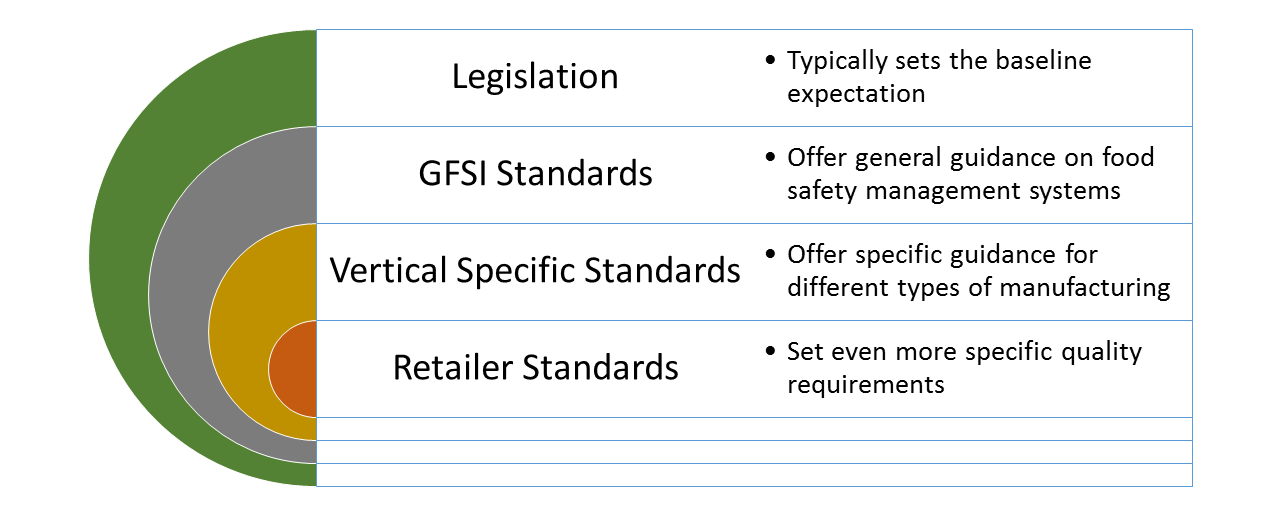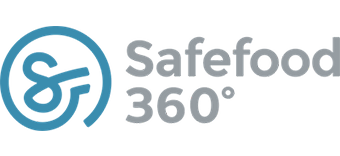Do we need all these different food safety standards?
I don’t hear a lot of people questioning the status quo when it comes to having multiple global food safety standards, but let me play the devils advocate here.
As you know, there are a number of different food safety standards that you could get certified to: SQF, BRC, ISO 22000, IFS and so on. The biggest schemes are GFSI benchmarked, which means they all meet certain criteria.
When you want to go to the retail channels, many retailers accept any GFSI certification as evidence that your quality management system is sufficiently good for becoming a supplier. Doesn’t this mean that all these standards are more or less similar?
Sure, there are big differences from one standard to another when you really read into them, but it seems that being successfully certified to any one of the standards can help your processes and system reach a desired level. I have never heard that food produced in an SQF-certified facility would be even safer than food that’s produced under IFS standards!
Maintaining multiple standards is inefficient but necessary
I sometimes liken the situation with these competing standards to the situation with private health insurance. It’s just an inefficient way of solving a problem that in its core is not that difficult to solve. It’s one of these areas where, yes you can have some competition, but it doesn’t necessarily add any new positive innovation into the market. Sometimes the energy is spent on marketing and selling and maintaining the market share.
Many times incentives in a competitive environment work against the greater good: When financial rating agencies started competing for the same customers it actually led to slipping standards across the board. No one wanted to be the strict standard on the market. So in the financial market we saw two games where rating agencies were tough in public, but in reality they would allow banks to get away with whatever they wanted. I’m not saying that food safety standards are similar, but you get the point.
Am I suggesting there should be just one internationally recognized standard for food safety? Probably not. I’m just making the observation that having more standards doesn’t necessarily allow us to focus on the right things.
We see for instance the introduction of food defense into the standards – because it’s currently an exciting topic. In reality, most companies haven’t properly wrapped their head around even HACCP. So adding new, more nuanced requirements as part of unnecessary competition between standards is why people can’t see the wood for the trees.
Why do we have multiple standards?
We do need different layers of standards because not all standards apply to the same group. It is practical to have some baseline standards that apply to all of us, and stricter standards that only apply to some of us.

So there is always a need to have a set of layers. But variation within those layers is less needed.
Will one standard emerge as a winner?
Lets look at certification and competing food safety standards as a kind of free marketplace for ideas. Ultimately the best standard should be the one that is a) able to assure your production process meets high standards, b) able to guarantee your access to markets and channels, c) is operationally efficient. Then why is it that we haven’t really seen the emergence of one major standard that would dominate the market similarly like Windows dominates the operating systems market? Instead we have more than five standards, all more or less the same, none over the other in global popularity.
We are seeing indications that ISO 22000 is going to come out on the top as the global standard because it covers the general requirements for food safety. And we can add additional chapters to it – for instance FSSC 22000 – that make it specific to manufacturing. So this one remains still an open question for the future.
Food safety is universally shared
Two months ago we were in Barcelona at the BRC conference and we met people from all over Europe. Everyone had gathered in one place, sharing a common goal.
Also, as part of my job I have had the pleasure of visiting clients anywhere from Shanghai to Toronto. And no matter where I’ve met a food safety person, we’ve always had a common language and a common goal even if we didn’t speak the same mother tongue. Everyone has the need to produce safe food and food safety is a science that anyone can learn.
Food safety, as a process and as an occupation, is extremely similar from one country to another and it is far less dependent on culture and local tradition than perhaps some other areas of management are. And unlike other functions like sales, strategy or marketing, that are highly competitive in nature, food safety is actually highly collaborative. It’s amazing how openly companies are dealing with each other when it comes to food safety management.
The point I am obviously trying to make here is that food safety is something that we all share. And we don’t need multiple standards to make that observation.
GFSI was the first step toward unification
GFSI is a global initiative of bringing different food safety systems together and harmonizing practices across the globe.
We at Safefood 360° love the idea of GFSI, because their vision is highly similar to our vision of bringing all food safety processes and standards together in one product.
It’s probably not going to be GFSI that comes out with a global standard at any time time soon, because it’s even written into their mission statement not to start creating standards of their own. But some organization like WTO or FAO could in theory go one step further and try to coordinate a global standard that would be universally recognized. Even more likely is that the market share from ISO 22000 grows.
The interpreter
At Safefood 360°, we sometimes view our job as being a kind of an interpreter who attempts to unify all the standards into one software platform. We take in all the complexities of food safety standards and translate that analysis into something universally understood. We think there is only one way a corrective action needs to be handled, one way an audit should be approached as a process, etc.
When Safefood 360° was started some five years ago we spent over 6 months analyzing all major standards and legal frameworks and working it into the blueprint of the software. This work was only made possible because food safety management is universally shared and its based on the same science everywhere. Did you know that Safefood 360° is used on every continent at this stage and every single customer is using the same software without any custom modifications? Our customers are certified to a plethora of standards.
Apart from some local slang, it seems that food safety is almost like a universal language that brings companies and cultures together.
What do you think – do you feel that we will need the competition of different standards even in the future?





Leave a Reply
Want to join the discussion?Feel free to contribute!